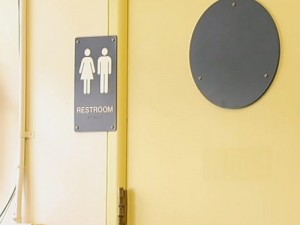‘‘Accommodate’’ comes from the Latin for ‘‘to make fitting.’’ It means to adapt, to bring into agreement or harmony, to furnish with something desired or needed, to favor or oblige. (Baseline 2015) “Making Bathrooms more Accommodating” by Emily Bazelon in a sense almost eludes irony just within the title itself. The accommodation of bathrooms can be argued because they are not so accommodating. Bazelon, from the beginning addresses some key points such as feeling vulnerable and also the dictation of ones body.
Many arguments are made in favor of unisex bathrooms, but with societies way of thinking, changing what one would call “the norm” has been proven to be difficult. For years society has brought awareness to problems such as segregation of social classes, race, religion but what we have failed to being awareness to is segregation of bathrooms. At first glance, segregation of bathrooms would not normally be first on the agenda to be addresses but it is a problem that affects the community we surround ourselves with daily.These public conveniences use appearance to dictate who goes where. Transgenders are often faced with agonizing choice of which restroom to use which results in the comfortability of a personal area to be diminished. How should a transgender choose which restroom to use when they fit the criteria of both genders? Should they be judged off original gender, which evidently will cause more problems than solutions? Should transgenders be forced to feel uncomfortable in a space provided for privacy? When it comes down to transgenders and restrooms or locker rooms, there will always be an issue.
A case Bazelon included in her article is that of a transgendered Illinois high school student was identified as a female or her passport and identifies as a female was refused the right to change in the girls locker room. These inconveniences not only affect transgenders but male and females on a daily as well. Women are forced to wait in long lines while the opposite sex restroom does not have a soul in sight. Should women have to suffer because specific guidelines are not met in reference to who can and cannot use a certain restroom.
Today’s society is always pushing for equality but with the separation of restrooms, the one step we took to progression has now knocked us backed two steps. We argue that both and men and women should be able to do the same things such as both being able to go topless without women being judged but when the debate of unisex restrooms come in to play, there is not much coverage or argument to get the results we need. The term ‘accommodate’ poses issues within itself and the author addresses that in the article. Bazelon suggests that the loaded term contributes to the “othering” of transgender people and the manner of the term “often sets up a distinction between the normal and the other.” (Bazelon 2015) In essence the author does provide possible solutions to the accommodation situation that lies in todays society. These solutions are relatively small sacrifices that as a society, we would have to make; Bazelon proposes both privacy curtains and single-unisex stalls.
